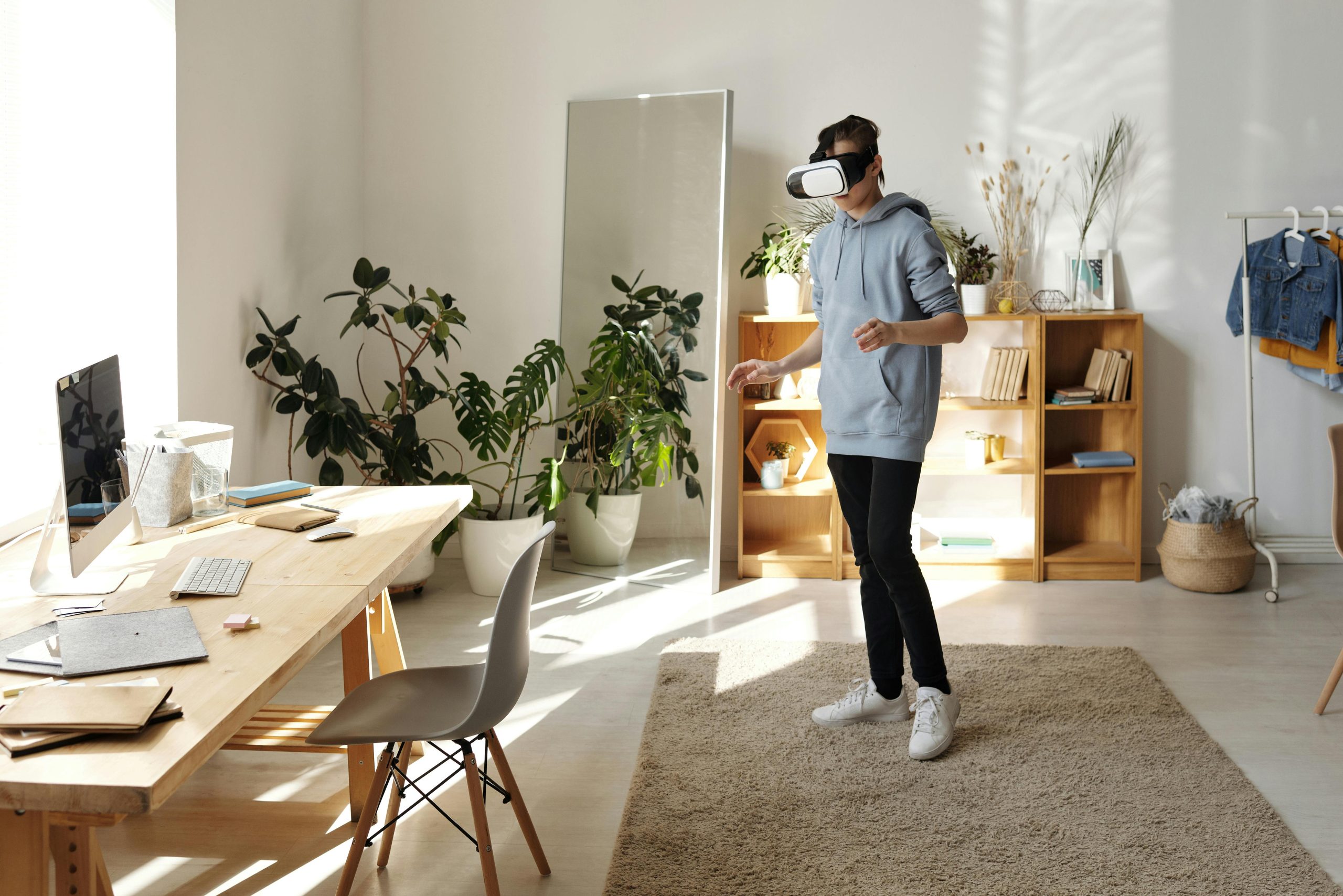How to Build a Virtual Reality Training Program for UK Emergency Services?

The rapid advancement of technology in the 21st century has revolutionised several sectors, including education, healthcare, and most notably, the emergency services. One innovation that’s gaining traction in the UK’s emergency services training is the application of virtual reality (VR). This revolutionary technology provides a unique learning experience for students, fostering an environment where they can simulate real-life emergency situations without the associated risks or cost. But how can you build such a program? This article will guide you in creating a comprehensive VR training curriculum for UK emergency services.
Understanding the Value of Virtual Reality for Training
Before diving into the creation process, it’s essential to understand the value that VR brings to training programs. Virtual reality offers an immersive, interactive, and safe learning environment for students, allowing them to experience simulated scenarios that occur in real-life emergencies. This technology-based training approach significantly improves the competence and confidence of learners, preparing them for the demanding task of saving lives.
Lire également : What Are the Best Approaches for UK Charities to Use Social Media for Fundraising?
Moreover, VR training provides an opportunity for students to make mistakes and learn from them in a controlled environment, thus minimizing potential risks to patient safety in the real world. Additionally, a study conducted by Google demonstrated that VR training could reduce the time required for learning complex skills, making it a cost-effective solution for training programs.
Integrating Virtual Reality into the Existing Curriculum
Integration is a critical element in leveraging VR for training. It is not about replacing the existing curriculum, but rather enhancing it through the integration of VR. Begin by identifying areas where VR can deliver the most value, particularly in classes and training sessions that involve critical skills or procedures.
Sujet a lire : How Can UK Property Agents Leverage VR for Virtual Property Showings?
For medical students, for instance, VR can be employed to simulate surgeries, offering a real-world experience without risking a patient’s life. In contrast, for fire and rescue services, VR can simulate various emergency scenarios, enabling trainees to practice response tactics in a realistic yet safe environment.
Developing Content for Virtual Reality Training
Content creation is the heart of any training program, and the same is true for VR training. Here’s where partnership with academic scholars from university or other educational institutions can come in handy. These scholars have the expertise and the resources to help develop immersive content for the VR environment that’s not only educational but also engaging.
For instance, medical scholars can help design a virtual patient, complete with a full range of symptoms and responses. This simulates a real patient interaction, enabling students to improve their diagnostic and treatment skills. Similarly, for emergency services, scholars can help design real-world emergency scenarios, such as a building on fire or a serious road accident.
Selecting the Right Virtual Reality Technology
The choice of VR technology is crucial in creating a practical and engaging training program. Currently, there are a plethora of VR hardware and software available in the market, including popular options like Google’s Daydream or Oculus Rift. The selection should be based on factors such as usability, compatibility, and cost, among others.
Also, it’s crucial to consider the specific needs of the training program. Some VR platforms may be perfectly suitable for gaming or entertainment but may not fit the requirements of a rigorous, skills-based training program for emergency services. Therefore, it’s recommended to test different VR platforms before making a final decision.
Ensuring Continuous Evaluation and Improvement
Building a VR training program isn’t a one-off process. It necessitates constant evaluation and improvement to remain effective. You need to gather feedback from students, instructors, and other stakeholders on the quality, relevance, and efficacy of the VR training simulations.
Using these insights, you can refine the VR content, improve the technology, and fine-tune the integration with the existing curriculum. This process of continuous improvement will ensure that your VR training program stays up-to-date and continues to provide value to students and the emergency services community as a whole.
Building a Virtual Reality training program for UK emergency services is a progressive step towards harnessing the power of technology for efficient learning. It provides emergency workers with immersive, realistic training experience, equipping them with the necessary skills to save lives and handle emergencies in real-world situations. By understanding the value of VR, integrating it effectively into the existing curriculum, developing compelling content, selecting the right technology, and constantly evaluating and improving the program, you will be able to build a comprehensive and effective VR training program tailored to the needs of UK’s emergency services.
Adapting the Training Program to Different Disciplines
Adapting the VR training program to cater to the diverse disciplines of emergency services is a vital step to ensure its effectiveness and relevance. It’s essential to tailor the program based on the unique training needs and objectives of each discipline, whether it’s paramedics, fire and rescue services, or police forces.
Paramedics, for instance, can benefit greatly from VR training by simulating various patient scenarios. These scenarios can range from simple medical situations to more complex ones like multi-vehicle accidents or mass casualty incidents. With the help of Google Scholar articles, PubMed free articles, and other resources, medical educators can develop VR content that closely mimics real-life patient encounters, thereby enhancing the decision-making capabilities of paramedics.
Similarly, fire and rescue services require training in diverse areas, from firefighting strategies to rescue operations. Here, using VR simulations of real-world incidents can provide invaluable hands-on experience to the trainees. For example, a VR simulation of a burning building can allow trainees to practice fire suppression tactics in a controlled environment, improving their competency and confidence.
Police forces, on the other hand, can use VR to practice negotiation skills, respond to public disturbances, and even conduct crime scene investigations. A well-designed VR scenario can help police officers make critical decisions under pressure, mirroring the challenging situations they may face in their line of duty.
Implementing the Program and Monitoring Progress
Once the Virtual Reality training program is fully developed and tailored to the needs of the different disciplines, the next step is implementation. This involves setting up the VR infrastructure, training the instructors, and integrating the program into the current training schedule.
The implementation phase also includes informing all stakeholders about the benefits and expectations of the VR-based training. This will help to create a supportive environment that encourages learners to actively participate and engage with the VR simulations.
After the implementation, it’s important to regularly monitor and assess the progress of the trainees. Use systematic reviews and tests to evaluate how the simulation-based training is impacting their skills and decision-making abilities. This data can be used to adjust the training program to better suit the needs of the trainees.
Remember, the purpose of implementing a VR training program is not just to incorporate a new technology, but to enhance the capabilities of emergency services personnel. Thus, it’s crucial to keep track of each participant’s progress and use their feedback to continuously improve the program.
Conclusion
Virtual Reality training offers a transformative approach to training emergency services personnel. By simulating real-life situations in a controlled environment, VR provides an immersive and interactive learning experience. This not only improves the trainees’ competency and confidence but also prepares them to make critical decisions in high-stress situations.
Building a VR training program for UK emergency services entails understanding the value of VR, integrating it into the existing curriculum, developing engaging content, selecting the right technology, and continuously improving the program. Moreover, it’s essential to adapt the program to the unique needs of each discipline and to monitor the progress of the trainees.
While creating such a program requires a significant investment of time and resources, the benefits it offers in terms of improved training outcomes and enhanced emergency response capabilities make it a worthwhile endeavor. The future of emergency services training in the UK looks bright with the integration of Virtual Reality technology.
